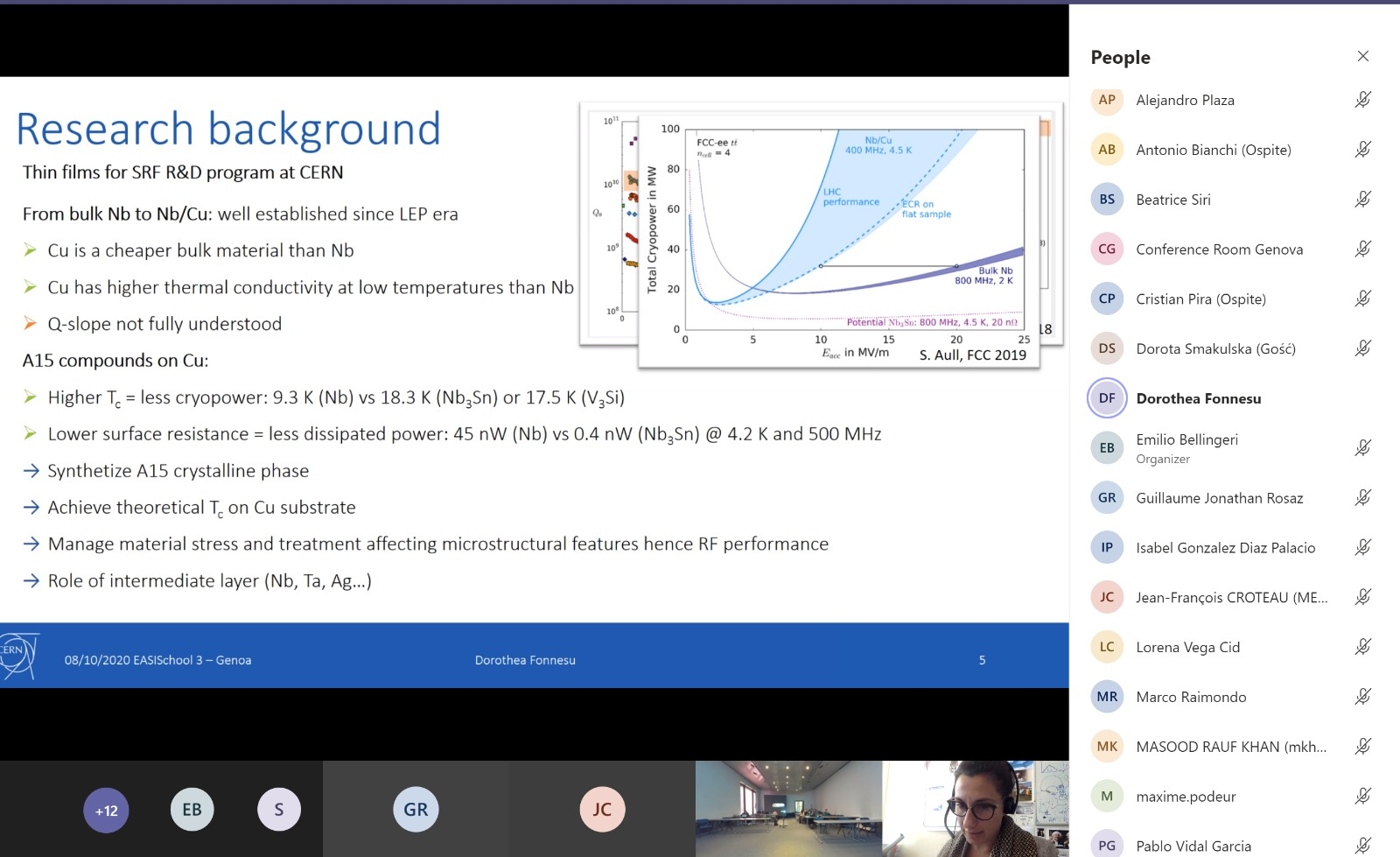The EASITrain fellows and 16 external participants, most of whom are master or doctoral students, attended the last summer school of the EASITrain project, EASISchool 3 –Superconductivity and its applications, at the CNR - Spin research institute in Genoa, Italy. The school took place between 28 September and 9 October. The current COVID-19 pandemic resulted in about half of the participants and speakers physically attending the training, while those who could not travel to Genoa were able to attend remotely.
The academic program lasted from the 28th of September to the 6th of October and featured experts from CERN, INFN, University of Genoa and other European and American institutes as well as private companies. The initial lectures detailed the basics of superconductivity and its application in superconducting radio frequency (SRF) cavities, (in both bulk Nb form and thin film form). Following this, the application of superconducting materials, typically in thin film form, was introduced. These lectures focused mainly on superconducting detectors, electronics and the use of superconducting materials in quantum computing. Finally, the design and development processes of superconducting magnets for different applications (particle accelerators, nuclear fusion reactors, and magnetic resonance imaging (MRI)) was presented. The presence of speakers from private companies such as ASG Superconductors, IBM, and Bruker allowed the students to see how superconductivity is already helping to improve the lives of millions of people, through application in the medical industry, and how it will influence the future of information technology with the development of quantum computers.
On the 7th of October, the participants visited the factory of ASG Superconductors. The factory focuses on the development of MgB2 wires and is one of the world’s largest superconducting cable manufacturing facilities. Some notable recent projects on which ASG Superconductors is working include the construction of the superconducting cables for magnets that will be used in ITER’s nuclear fusion reactor as well as MRI and nuclear magnetic resonance (NMR) machines for their medical division.

On the last two days of the event, participants at the Ph.D. and postdoctoral levels presented their results to their peers during a Student Workshop organized by the ESRs. The students’ results showed promising signs for the technological advancements required for CERN’s Future Circular Collider (FCC), superconducting cables, and particle accelerators in general. The participants were also afforded the opportunity to build long lasting relationships with fellow researchers in the superconducting field, which is of vital importance in international, co-operative research projects. This was also an opportunity for students to see all the work conducted in Genoa, such as the development of superconducting detectors for the Athena satellites, the development of a beam screen coating for the FCC, improvements on the manufacturing of superconducting cables and much more. All of those activities show the importance of the city in the development of superconducting technologies on both the European and world stages. Three guest speakers, Patrizia Azzi (INFN), Michael Benedikt (CERN), and Paul Libeyre (ITER), also joined the workshop and presented the physics motivations and roadmap for the FCC and the development of magnets for ITER. Those talks, again, show how bright the future is for young researchers in the superconducting community.

